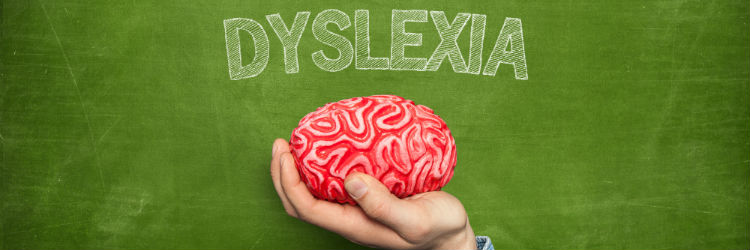How to embrace dyslexia and use it to thrive in life

What we all want is to be happy and succeed – for ourselves and especially for our children. But these goals are not simple to achieve for anyone, let alone for somebody who has been diagnosed with a brain and learning difference such as dyslexia. However, in The Power of Different Dr Gail Saltz shows how the source of our struggles can be our greatest strength, coupling recent neurological research suggesting that a deficit in one area of the brain could be linked to a potential for talent with her experiences as professor of psychiatry and practicing psychiatrist.
In her book, Dr Saltz explores the ways in which the unique wiring – some aspects of which might be considered weakness in certain contexts – of many high achievers has directly contributed to their abilities and achievements: as she states in the Introduction, ‘the world is full of fascinating people who didn’t achieve such success despite their brain differences, but rather in large part because of their brain differences’.
Here’s an extract from Chapter 1 – Learning Differences in which Dr Saltz shows how dyslexia, a condition that can cause difficulty at school or at work, is bound to creative, disciplinary, artistic, empathetic and cognitive abilities.
GIFTS OF THE BRAIN WITH DYSLEXIA
Beryl Benacerraf, who felt like a failure because she needed her father’s help to get into Harvard Medical School, eventually discovered her remarkable gifts only because she had managed to struggle her way past all the hurdles of academia.
Benacerraf had already learned that she was more successful at retaining information when she studied the charts and graphs in her textbooks, rather than the written text. But when she was a medical resident at the end of her radiology rotation, her professor said to her, ‘I’ve never seen a gift in imaging and pattern recognition like you have. It’s uncanny. You should really think about going into radiology.’ Discovering that she had a true genius for something particular changed Benacerraf’s life. Still, it took time for her to accept that she was gifted. ‘When I looked at images the abnormality just jumped out at me, like a neon sign. It was a new world. It was amazing. I never realised I was special that way. I kept thinking that the other students would catch up with me. It took a decade for me to realise it wasn’t luck.’
It wasn’t luck at all – it was Benacerraf ’s exceptionally acute peripheral vision, a gift she has almost certainly because she is dyslexic. ‘When I look at an image I’m not looking at little parts of the image. I take in the whole thing all at once as a pattern.’ In other words, the same neurological process that makes it difficult for her to read text enables her to almost effortlessly find abnormalities on a scan. She also believes that ideas and conclusions come to her more quickly because she thinks visually. ‘Images are faster than speaking to yourself in words. Sometimes images come so fast I lose my train of thought.’ Benacerraf ’s highly visual brain works in business as well. She finds that she’s quite good at running her private imaging practice, a large, multipart enterprise. ‘I don’t get mired, I take in the big picture and delegate details to others. Putting together ideas that others wouldn’t think of plays out entrepreneurially in this area.’
Benacerraf has also found that discovering her gift has gone a long way toward healing some of the injuries her self-esteem suffered over so many years of feeling stupid. At the beginning, ‘I was this crazy lady who could diagnose Down syndrome in a foetus. I knew I was right, it was just a question of proving it.’ Now, she has ‘supreme confidence’. When a family member needs an important scan, she does it herself, and it brings her great pleasure to feel competent.
Carol Greider knew that she wanted to major in biology when she was a senior in high school. Whereas some dyslexics might find biology challenging because of all the naming and labelling and the extensive vocabulary, Greider turned her reading deficit into a strength in a way that is very common among dyslexics. As a child, Greider ‘couldn’t spell at all even if they sounded out the words, so I learned to memorise the whole word.’ Because of this learned compensation, ‘senior year doing anatomy in biology it was super easy for me to remember vocabulary.’
Later, in graduate school and beyond, Greider noticed that she had another heightened ability that was far more central to becoming the scientist she is today. ‘I am able to read ten complex research papers and then distil from them all the pertinent points, homing in on the key issues. That is very important for moving ahead in science. I think maybe more so than others, I can quickly see what the most interesting next question is.’ In the competitive scientific environment, many researchers are simultaneously racing toward the same discoveries, and in that race Greider sees herself as having an advantage in being able to identify the most interesting line of investigation among myriad possibilities, and then following that. Sidney and Schuyler both exhibit analytical gifts comparable to what Benacerraf and Greider depict. Even more fascinating, both girls use very similar terms to describe their love of abstract concepts. Schuyler says, ‘The more abstract the idea, the easier it comes to me.’


